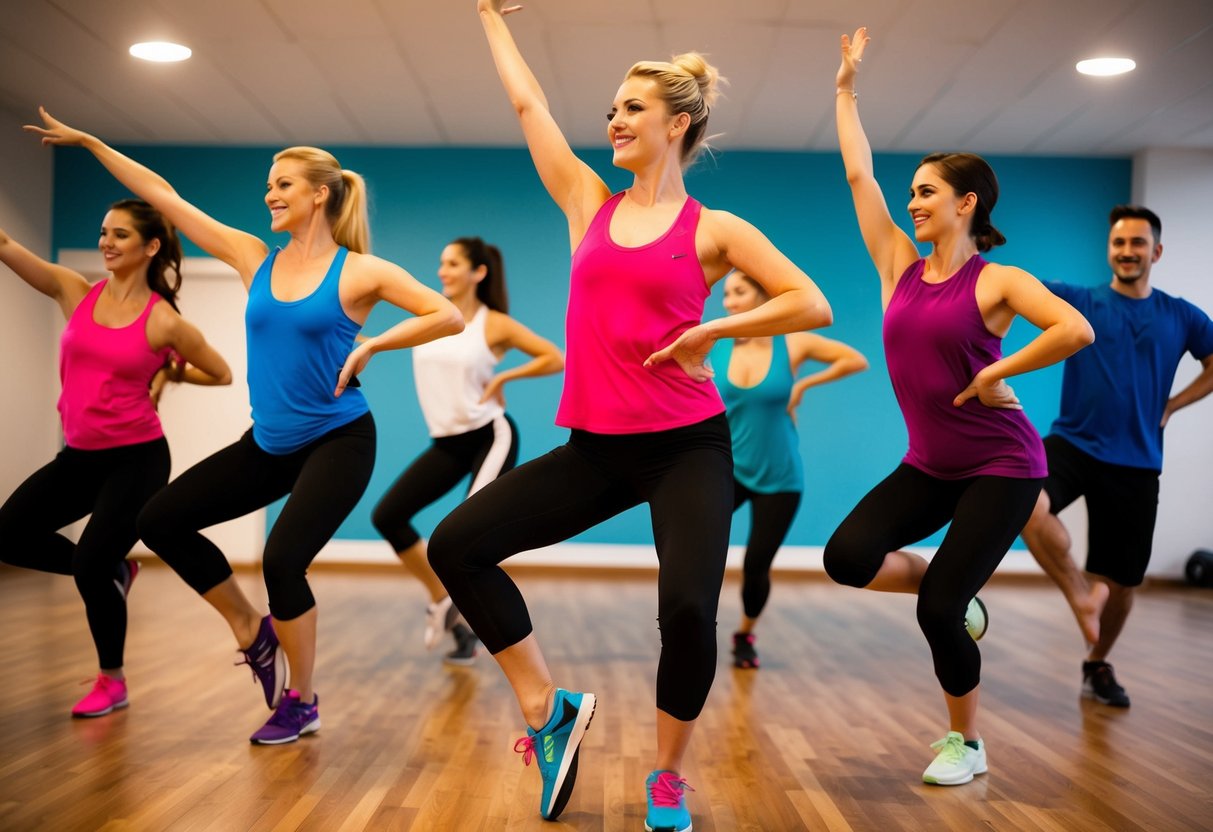DIY Dance Workouts: Get Fit with Fun and Energetic Moves
Learning Basic Dance Moves
Dance workouts offer an exciting way to get fit, emphasizing rhythm and step patterns. Key elements include developing a sense of timing and mastering simple dance steps.
The Fundamentals of Rhythm
Rhythm forms the backbone of dance. It is essential for dancers to internalize the beat of the music. He or she often starts by tapping their feet or clapping hands to the music. This builds the necessary coordination and allows them to stay in sync with the music.
Listening to songs with various tempos helps individuals appreciate different rhythms. Practicing with slow and fast tracks can improve adaptability to diverse musical styles. Some dancers use counting methods, like counting in eights, to keep track of beats. Regular practice in front of a mirror helps refine timing and coordination, offering clear visual feedback on rhythmic alignment.
Mastering Basic Step Patterns
Basic step patterns are the foundation of most dance workouts. They include moves like the grapevine and two-step, which are easy to learn. Focus on foot placement is crucial in executing these patterns correctly.
Beginners often benefit from starting with simple moves, gradually increasing complexity as confidence grows. They should pay attention to body posture, ensuring balance and fluid motion. Practicing each step slowly at first ensures accuracy before attempting to speed up. As proficiency develops, they can combine different patterns into fluid sequences, enhancing both workout intensity and enjoyment.
Popular Dance Styles and Routines

Popular dance workouts offer exciting and effective ways to boost fitness levels. Each style is distinct, ranging from the rhythmic beats of Zumba to the structured elegance of ballroom dance. These routines cater to different tastes and fitness goals while keeping participants engaged.
Zumba: A Cardio Party
Zumba combines dynamic Latin rhythms with easy-to-follow moves, creating an engaging workout that feels more like a party than exercise. It incorporates elements of salsa, merengue, and samba, making it perfect for those seeking both fun and fitness. This dance style helps to improve cardiovascular health, burn calories, and enhance coordination.
Participants of all skill levels can enjoy Zumba, as instructors offer modifications to ensure an inclusive environment. The lively atmosphere and energizing music make each session a delightful experience, encouraging regular attendance. With its community-oriented nature, Zumba fosters connections among participants, often leading to a shared love for dance and fitness.
Salsa: Latin Flavors
Salsa dance brings the vibrant energy of Latin America to the workout scene. Known for its spicy, rhythmic steps, salsa focuses on footwork, hip movements, and partner interaction. It’s a fantastic way to improve balance, agility, and leg strength while enjoying the passionate beats.
This style is often performed in pairs, promoting social interaction and teamwork. Many fitness centers and studios offer salsa classes where enthusiasts learn both basic and advanced steps. The music is essential, with its infectious beats inspiring dancers to move with enthusiasm and precision. Salsa’s dynamic nature makes it a popular choice for those seeking an energetic and interactive workout.

